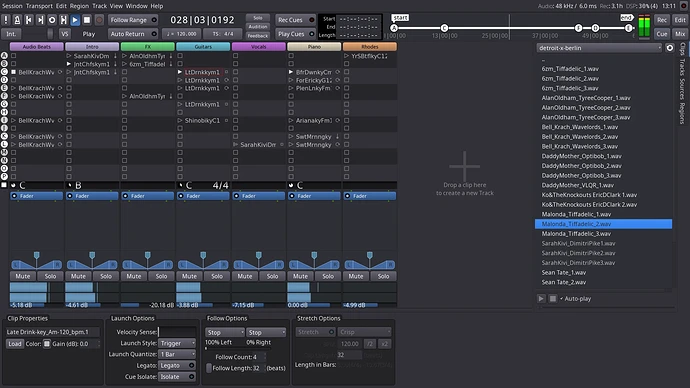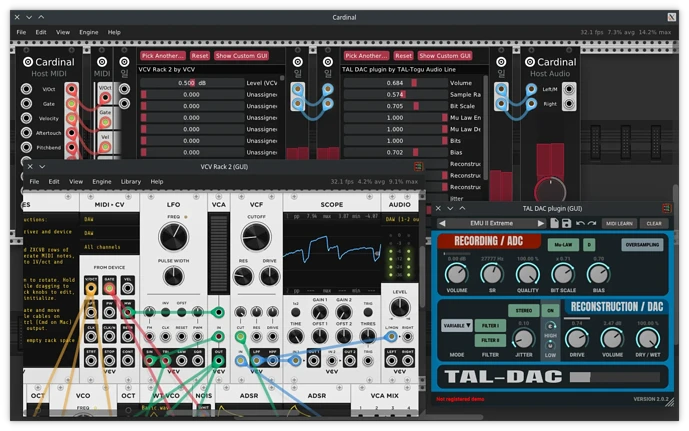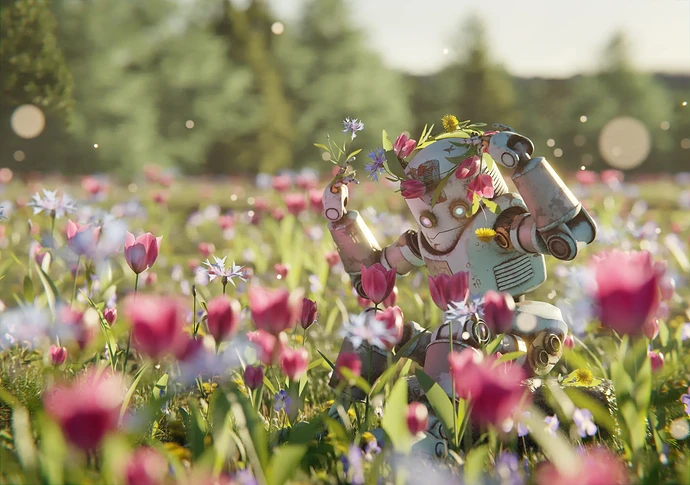It’s been a while since my last weekly recap. A lot has happened since then, more on that some other time. Let’s get to the point.
GIMP is getting text strokes
This has been a very long time in the making. The patch adding text stroke support was originally created by Massimo Valentini in 2011 to handle a feature request filed in 2003 (retribution is inevitable). Earlier this year, Michael Schumacher merged the patch into a feature branch, and then Cmyk.Student (this year’s GSoC student who appears to be a godsend) cleaned it up and merged it into the main development branch.
Massimo's Outline Text feature has been added to @GIMP_Official's development branch! You should all get to try it out in 2.99.14 (or right now if you build from source)
— CMYK Student (@CmykStudent) October 13, 2022
The code has existed for a long time, so I'm glad people will finally get to use it. pic.twitter.com/MYTXXNHJ0t
The very same student also discovered a bitrotting plugin for ICNS support and rewrote it to use GEGL and reuse existing PNG/JPEG plugins. So that’s another feature apparently coming to the next development release of GIMP. He’s also working on getting GIMP to support the MyPaint v2 brush engine.
Meanwhile, Jehan resumed his work on getting GIMP to properly support multi-item selection. The Align/Distribute tool now supports multi-selection and will be further updated to provide better UX.
Inkscape news
I have to admit I’m a little lost in the massive amount of work that has been happening in the Inkscape department lately. Here are some of the things that I think are definitely worth mentioning.
Martin Owens recently fixed some bugs in the shape builder tool, continued working on PDF support and added origins support for multiple pages. I cannot recommend enough his weekly videos for those who want regular updates about the project.
More is happening in merge requests:
- Jonathan Neuhauser is adding underline/strike-through buttons to the Text tool.
- Jabier Arraiza is adding a new tool to paint with symbols.
Jabier Arraiza is working on a new tool to paint symbols on the canvas in @inkscape. Also note the how the ruler now visualizes size/location for newly created and selected objects! OBS is making the video feel sluggish, sorry about that :) pic.twitter.com/xFPpv6aHKr
— Libre Arts (@lgworld) October 25, 2022
- PBS is working on a fix that improves the overall document performance by 20%.
- There’s also ongoing work by Sushant A.A. on merging his GSoC2022 project that allows opening documents in tabs rather than separate windows. The work seems pretty much done, it’s undergoing code review.
Krita is preparing a bugfix release
Krita is about to make a bugfix release, but there’s more going on.
- Wolthera van Hövell returned to porting Krita away from Qt’s own text layout engine to Raqm and FreeType. The first stage of the port, made with SVG2 with mind, made it possible to support rotation and text on path. Now the rest of Krita needs to follow suit.
- Deif Lou is adding an ability to pan while painting or doing a free selection.
- Mathias Wein is working on a wide-gamut color selector instead of the old one that used the HSV color model only. Here is some background info..
For detailed weekly reports from the project check out this section on Krita Artists.
Kdenlive is getting nesting
Jean-Baptiste Mardelle recently started working on nesting which basically allows constructing sequences from other sequences. This is really solid, useful workflow stuff. It’s still very early work, it probably won’t make it to the 22.12 release, but it’s coming anyway.
Olive news
Matt published a project update on Patreon in early October. Not sure if it will open for you if you are not subscribed, so I’ll just mention some of the new features: multicam editing, searching by name in the project bin, more vertical space for timeline waveforms (clip name now displayed on top of the waveform, see below), simplified nesting, improved text editing, caching improvements, various optimizations, and more.
I’ve done a couple of projects with unstable Olive recently. There are some annoying buglets (all being taken care of), but it’s becoming really usable for some heavy-lifting.
Ardour 7.0
Paul, Robin et al. released Ardour 7 with a crapton of changes. I think pretty much every relevant demographic out there will find something really important among the many improvements and fixes.
The few things I’d focus on would be these.
Timing revamp. Ardour now has a vastly better foundation for dealing with musical and audio time. Very few conversions between the two types, and thus a lot less bugs, mostly manifesting themselves when you create new MIDI regions or notes, or drag, trim, and otherwise reposition region boundaries. A lot of users’ headache just gone. This required a lot of work. I’m talking at least 4 years of development while fixing bugs and making feature releases in the 6.x series.
Clip launching. Is the non-linear sequencer with a grid-like UI you know from Ableton Live and (by now) probably half a dozen of other applications. You can load a bunch of audio and MIDI clips, organize them into tracks (all clips from roughly the same instrument) and scenes (all clips that should play together). Then you can program when one slot with a clip stops playback and triggers another clip on the same track, how that slot gets triggered for playback, what time unit it snaps to etc.
You can use it however you like: for making entire compositions, for programming beats and their transitions and building them into sequences on the timeline via clip markers, and so on.
Clips browser. A very simplistic way to reuse clips you have around. Add paths to existing loop libraries or populate your custom library from your own content (usually by bouncing regions to the clips library). If you don’t have a collection of loops and you are lacking real instruments to make them, there’s a large library of those you can download freely right from Ardour’s UI. It’s mostly CC-0 (public domain) and CC-SA content.
Plugin Manager. This is what you will probably use to discover new plugins while working on a project most of the time. But it’s also helpful for troubleshooting.
But there’s lot more: advanced Ableton Push 2 support (for clip launching), more and better Ripple mode options, I/O plugins, mixer scenes, MIDI editing toolbar etc. See the release notes for more info.
The team is actively working on the next release. Much of the work is an iteration over what arrived in 7.0, but also some long-anticipated things: send UI, usability improvements for automation editing, all sorts of other usability fixes.
In preparation for Novation Launchpad support, Paul started rewriting some core functionality for control surfaces and added MIDI learn for trigger slots. I’m not sure if we’ll get Launchpad support in 7.1, but the way things are going it’s going to be a lot easier to support more grid-based controllers.
MuseScore 4 beta
I think the final release was originally scheduled for late 2021 / early 2022, but don’t get too grumpy. Upcoming MuseScore 4 is well worth all the waiting: cleaner UI, engraving improvements, a whole new plugin with high-quality playback of the score in real-time mode, and more.
This beta finally comes with support for Muse Sounds — the sampler plugin I mentioned above. You don’t get any UI for sampler options (at least, not yet). The plugin is proprietary and free to use, and so are the sample libraries (the ones currently available). This project was made in collaboration with the team from another Muse Group’s product, Staffpad. The samples are even in its file format (it’s Opus audio files plus metadata really). Muse Sounds also isn’t a VST3 or LV2 plugin, it uses a custom plugin API by MuseScore, so it’s not easy to reuse the sampler in other software.
Óscar Grau did this very nice example of what the MuseScore 4.0 beta plays back in real-time now when you use Muse Sounds:
I’ve seen a lot of people asking the team if NotePerformer would be directly supported in MuseScore 4 (as that involves more than just loading a VST), but no definitive answer from the team. My understanding is that they spent a considerable amount of time and resources on the Muse Sounds sampler and the translation of score marks to sample bank triggers. Recording and preparing the sample libraries alone would be in the seven figures ballpark. So they would probably would be more invested in doing their own thing. At least, for now.
All distribution of libraries is done through Muse Hub, another proprietary program they created. It’s used to simplify installing/updating programs like MuseScore and Audacity, as well as installing sample libraries and audio effects (some of that not available on Linux yet, but it’s coming).
Muse Hub looks like Muse’s attempt at creating a viable ecosystem with an outlook for selling extras to cover the expenses of developing software like MuseScore and Audacity. They’ve built entire teams for both projects: programmers, QA engineers, UX/UI people, and more. And, like I mentioned, developing orchestral libraries wasn’t cheap either. So it looks like there will be more proprietary products made on top of free/libre software.
Cardinal 22.10
Filipe Coelho released a new version of this VCV Rack based synth. The main change here is that it comes with a new internal copy of Ildaeil, and that means you get to load arbitrary files as plugins. So you can easily host VST2 and CLAP plugins without having to install and run Carla alongside.
Castopod 1.0
I don’t usually cover the topic of CMS et al., but Castopod is a nice exception. It’s an online system for self-hosting podcasts and broadcasting new episodes to Apple Podcasts, Spotify, Deezer, Podcast Addict, and other services. It also simplifies sharing to Fediverse. Check out the announcement.
Artworks
Taku Tsukishiro, Retired Robot (Blender):
David Revoy, Confront the Dragon (Krita):
Sylvia Ritter, Kinetic Kudu (Krita):

More art from Philipp Urlich (Krita):
The portal, result of todays live stream. pic.twitter.com/njOiezbJJu
— Philipp "Soma" Urlich (@somartist) October 23, 2022
On a personal note
I recently retired from GIMP. The sole reason I became active in the project years ago was because it wasn’t great at communication with users. The GIMP team are now active in the social media, they show what they do, and they write good release notes without my intervention. And while there are other things I could do, my job is pretty much done. I am confident that they will carry on doing great work on all fronts.
Currently, I’m mostly involved with Ardour where I keep the user manual and the tutorial updated and do various other things.
This is a companion discussion topic for the original entry at https://librearts.org/2022/10/week-recap-26-oct-2022/








